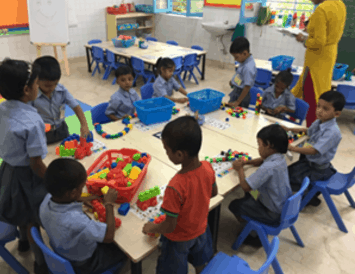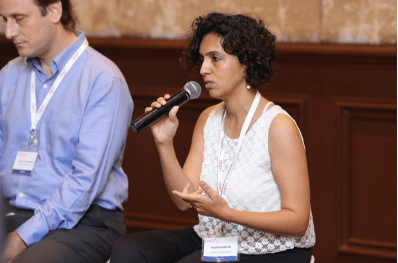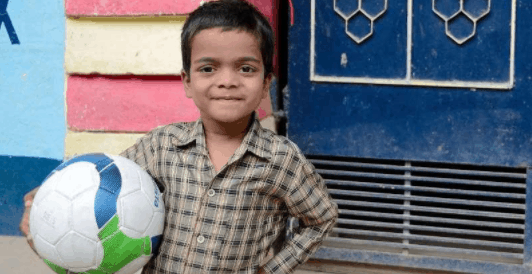- AVPN Members and SPOs are making strides to improve the quality of the education sector through creative collaborations with various stakeholders.
- Partnerships with government leaders to revitalise quality education in public schools is key
- Cross-border partnerships that adopt a blended finance model service the social economy more effectively
- While cross-border collaborations are essential, being data-driven is key to ensuring strategic and outcome-focused collaborations.
Made up of 1.5 million schools and over 250 million children, the education system of India is one of the most complex in the world, according to the India Brand Equity Foundation. This complexity, however, opens up doors for funders, resource providers, and Social Purpose Organisations (SPOs) to approach the education sector innovatively.
In this regard, we have seen members and SPOs making strides to improve the quality of the education sector through creative collaborations with various stakeholders. Here are 3 key insights on how members and SPOs have focused on different key stakeholders to empowered the entire ecosystem.
Revitalising Public Schools – in Partnership with Government Leaders
As more families were sending their children to private schools over poor quality public schools, it was becoming clear that schools were delivering lower quality education in regions where local governments lack capacity for full implementation. As a result, India’s policy makers are working to improve quality education in public schools. The Education Alliance (TEA), believes that a key method of improving education quality in India is through sustained engagement and empowerment of governments.
To address the deteriorating standards of public schools, TEA has developed a Government-Partnership School (G-PS) model. The model leverages on the combined strengths of existing government assets – such as, running a G-PS on government premises – and high quality non-profit organizations, which will be responsible for academic and administrative activities, driving enrolment, attendance, and learning outcomes. Moreover, with the support of the government, the school will not charge tuition fees.
TEA believes that G-PS schools are more effective in delivering positive outcomes because they follow better classroom practices, use progressive learning and teaching methods, have a focus on holistic outcomes, and an emphasis on community engagement. Indeed, the high satisfaction rate of G-PS parents of 90% has begun to drive enrolment back to government schools, and created tremendous opportunity for social investment in education.

In May of 2015, TEA partnered with Ark, which collaborated with the South Delhi Municipal Corporation to drive enrollment and improve the quality of education offered in the Lajpat Nagar III primary school. Through extensive community engagement and strong academic practices, Ark was successful in prompting parents to enroll students in this school over existing private schools in the area. Moving forward, Ark is looking for partners to continue creating a network of high-quality, non-selective, fee-free schools, in partnership with the government. The organization is seeking financial and non-financial support in the form of grants as well as access to networks, fundraising, revenue strategy, and human resources.
Maximising Potential through Cross-Border Partnerships
In order to maximise social impact, AVPN believes in catalysing collaborations between diverse funders and resource providers, thus using a blended finance model to better service the social economy. In this regard, EdelGive Foundation leverages on its capacity and capital as a grantmaker to collaborate with multiple NGOs including STiR Education, a capacity-builder that focuses on enhancing professional skills to improve the quality of teaching and student learning.

This catalytic movement of change is unique in the developing world, as it views teachers as the solution, rather than the problem. STiR builds “Teacher Networks” which are communities of practice where teacher can improve their classroom practice and ultimately deliver higher quality of education.For the past two years, STiR has been working India, training and supporting other education NGOs to embed this teacher-led model into schools, and directly implementing the model in Delhi. STiR has created the opportunity to impact of 60 million children, representing over a quarter of the world’s largest education system.
Data-Driven Approach to Collaborations
While cross-border collaborations are essential, being data-driven is key to ensuring strategic and outcome-focused collaborations. A prominent project by FSG Advisory Services is the The Program to Improve Private Preschool Education (PIPE), a research initiative aiming to develop affordable, high-quality private early childhood education in urban India. With funding partners such as Central Square Foundation, the data-driven research highlighted trends that have been useful in gathering a fuller understanding of the state of India’s early childhood education system, and develop commercially-viable solutions with social enterprises.

Continuing the Conversation
Conversations, strategies, and actions taken in the education sector are far from over. Join our members and SPOs at the India Summit 2017 to build cross-sector partnerships that facilitate more effective social investment in the education space. Pertinent themes include Successful Models for Early Childhood Education, Leadership Training in Schools, and more.

















